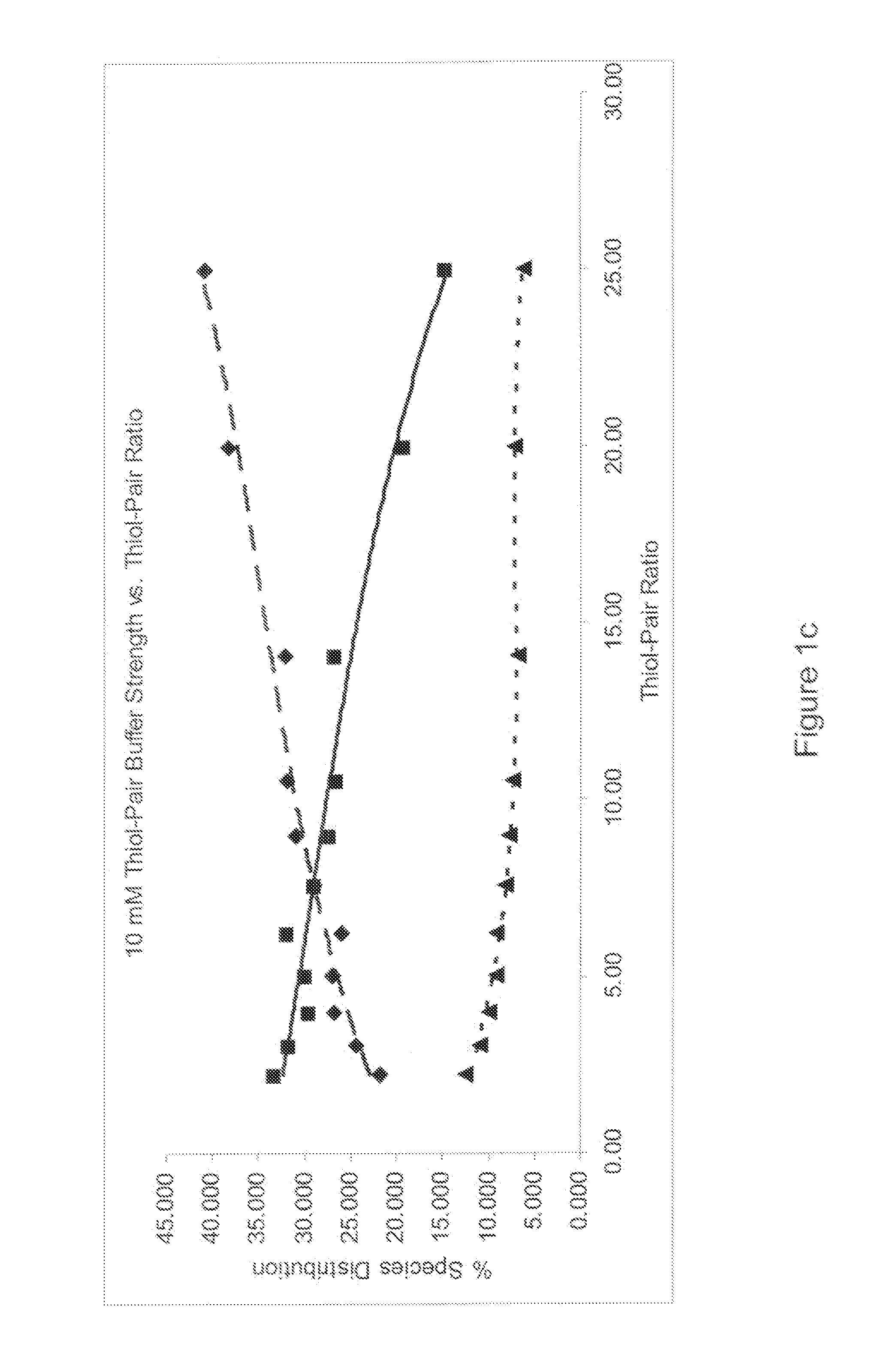Refolding proteins using a chemically controlled redox state
a redox state and protein technology, applied in the field of refolding proteins, can solve the problems of limited-solubility protein precipitation, formation of incorrectly folded recombinant proteins, and limited commercial utility of bacterial fermentation to produce recombinant large proteins, complex proteins, and high efficiency
- Summary
- Abstract
- Description
- Claims
- Application Information
AI Technical Summary
Problems solved by technology
Method used
Image
Examples
example 1
Expression of Recombinant Protein
[0069]In one experiment, recombinant proteins comprising an Fc moiety were expressed in a non-mammalian expression system, namely E coli, and driven to form cytoplasmic deposits in the form of inclusion bodies. For each protein refolded the following procedure was followed.
[0070]After the completion of the expression phase, the cell broth was centrifuged and the liquid fraction removed, leaving the cells as a paste. The cells were resuspended in water to approximately 60% of the original volume. The cells were then lysed by means of three passes through a high pressure homogenizer. After the cells were lysed, the lysate was centrifuged in a disc-stack centrifuge to collect the protein in the solid fraction, which was expressed in a limited solubility non-native form, namely as inclusion bodies. The protein slurry was washed multiple times by repeatedly resuspending the captured solids slurry in water to between 50% and 80% of the original fermentatio...
example 2
Identification of Refold Conditions / Redox Components
[0071]Multiple complex, microbial-derived proteins were evaluated. Each protein was solubilized in an appropriate level of guanidine and / or urea, typically at levels the equivalent of 4-6 M guanidine or 4-9 M urea, or combinations of both denaturants, which fully denatured the protein. The protein was reduced with DTT, 5-20 mM, at pH 8.5, and incubated at room temperature for approximately 1 hour.
[0072]Identification of the refold buffer was performed for each protein. A multifactorial matrix or a series of multifactorial matrices were evaluated to identify the refolding reaction for conditions that optimize yield and minimize aggregate formation. An identification screen was set up to systematically evaluate urea, arginine, glycerol and pH in a full factorial matrix, with each component varied over a range of at least three concentration or pH levels with all other parameters kept constant. The completed reactions were evaluated b...
example 3
High Concentration Refolding of Non-Native Soluble Protein Form Captured from Cell Lysate
[0075]In one experiment, a recombinant protein comprising a plurality of polypeptides joined to an Fc moiety was expressed in E. coli as an intracellular soluble peptide chain, lysed from harvested and washed cells, isolated from the lysate by affinity chromatography, and then refolded at a concentration of approximately 12 g / L, as described herein.
[0076]After the completion of the expression phase, an aliquot of whole fermentation broth was centrifuged and the liquid fraction removed, leaving the cells as a paste. The cells were resuspended in water to approximately 60% of the original volume. The cells were then lysed by means of three passes through a high pressure homogenizer. After the cells were lysed, the lysate pool was mixed in the presence of air for 8-72 hours to allow for dimerization of the peptide chains. Following the dimerization process, the peptide chain of interest was isolate...
PUM
| Property | Measurement | Unit |
|---|---|---|
| concentration | aaaaa | aaaaa |
| concentrations | aaaaa | aaaaa |
| volume | aaaaa | aaaaa |
Abstract
Description
Claims
Application Information
 Login to View More
Login to View More - R&D
- Intellectual Property
- Life Sciences
- Materials
- Tech Scout
- Unparalleled Data Quality
- Higher Quality Content
- 60% Fewer Hallucinations
Browse by: Latest US Patents, China's latest patents, Technical Efficacy Thesaurus, Application Domain, Technology Topic, Popular Technical Reports.
© 2025 PatSnap. All rights reserved.Legal|Privacy policy|Modern Slavery Act Transparency Statement|Sitemap|About US| Contact US: help@patsnap.com



